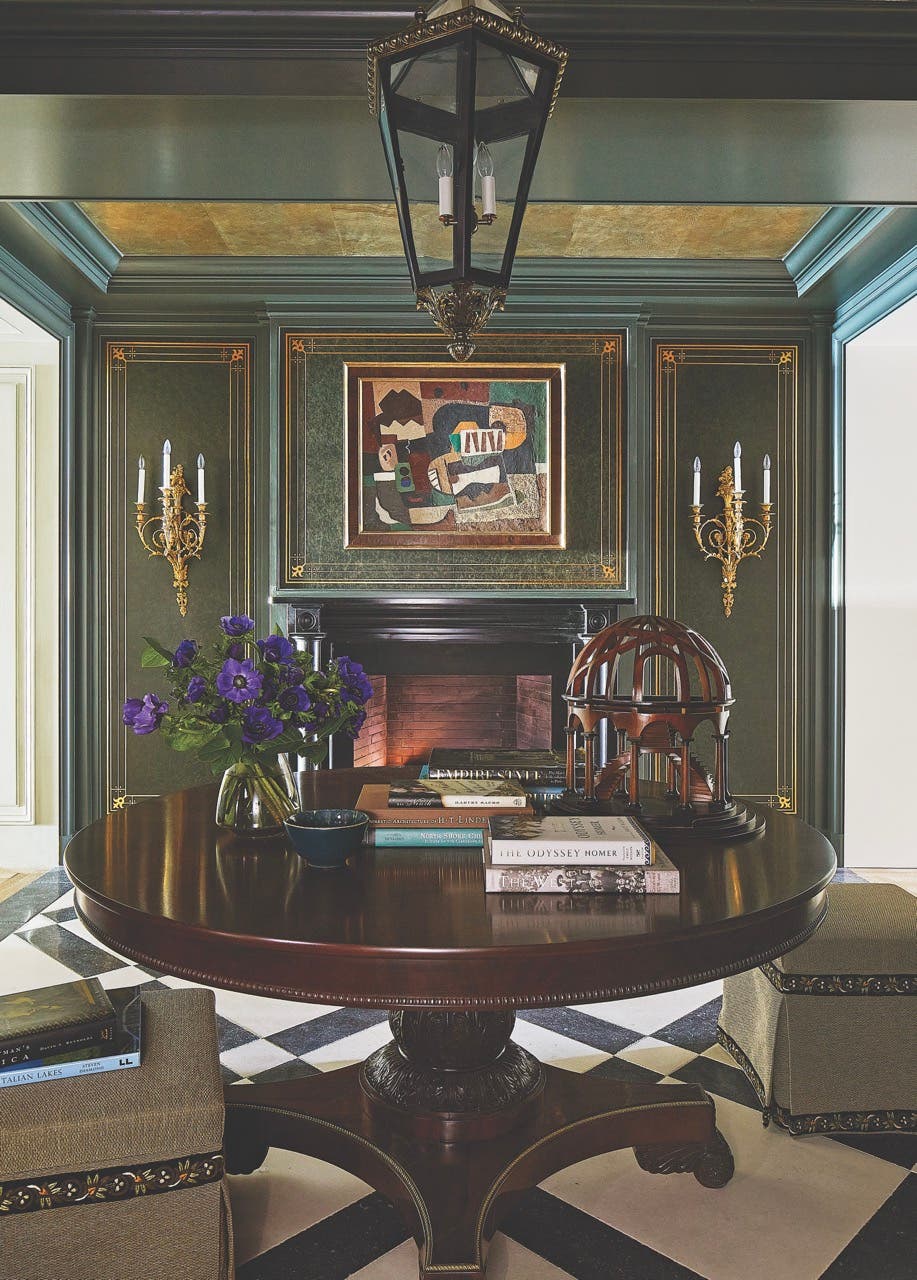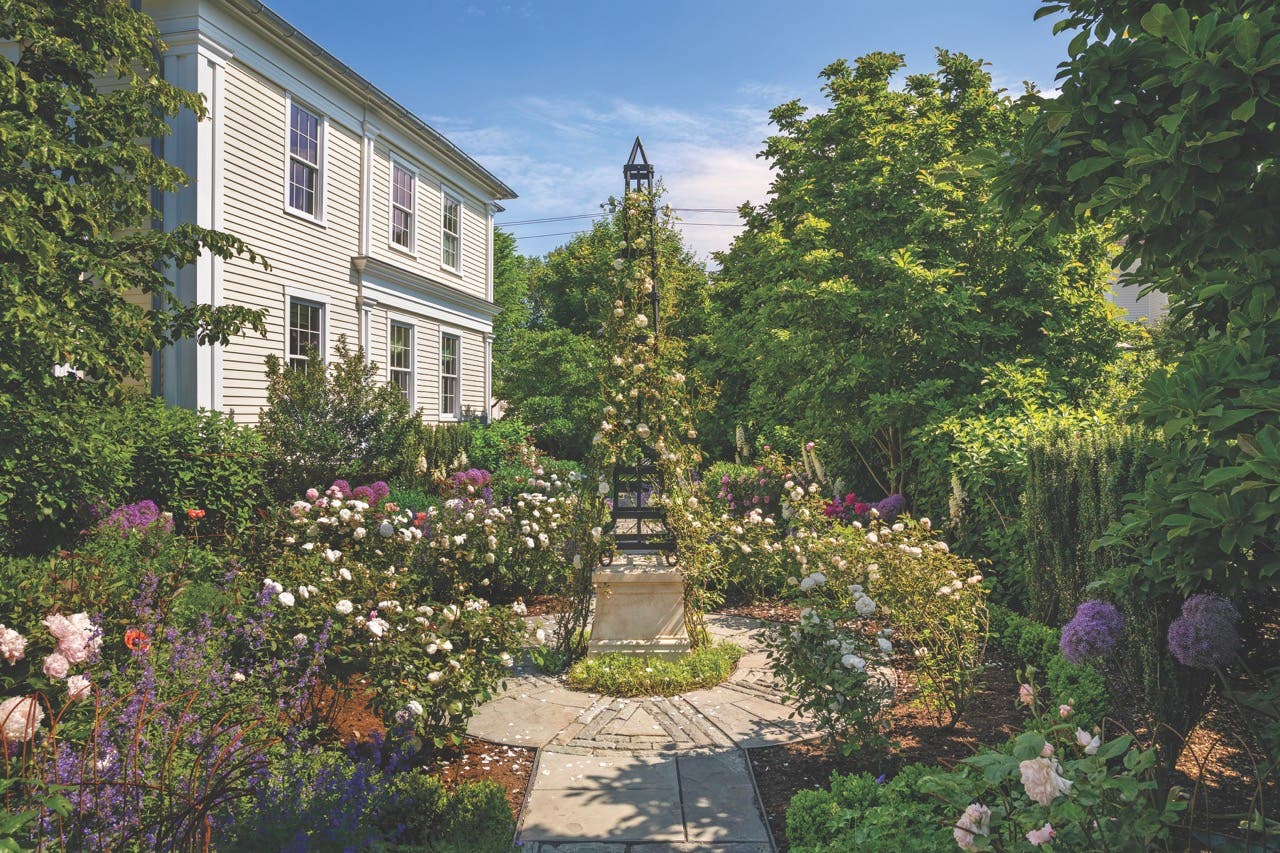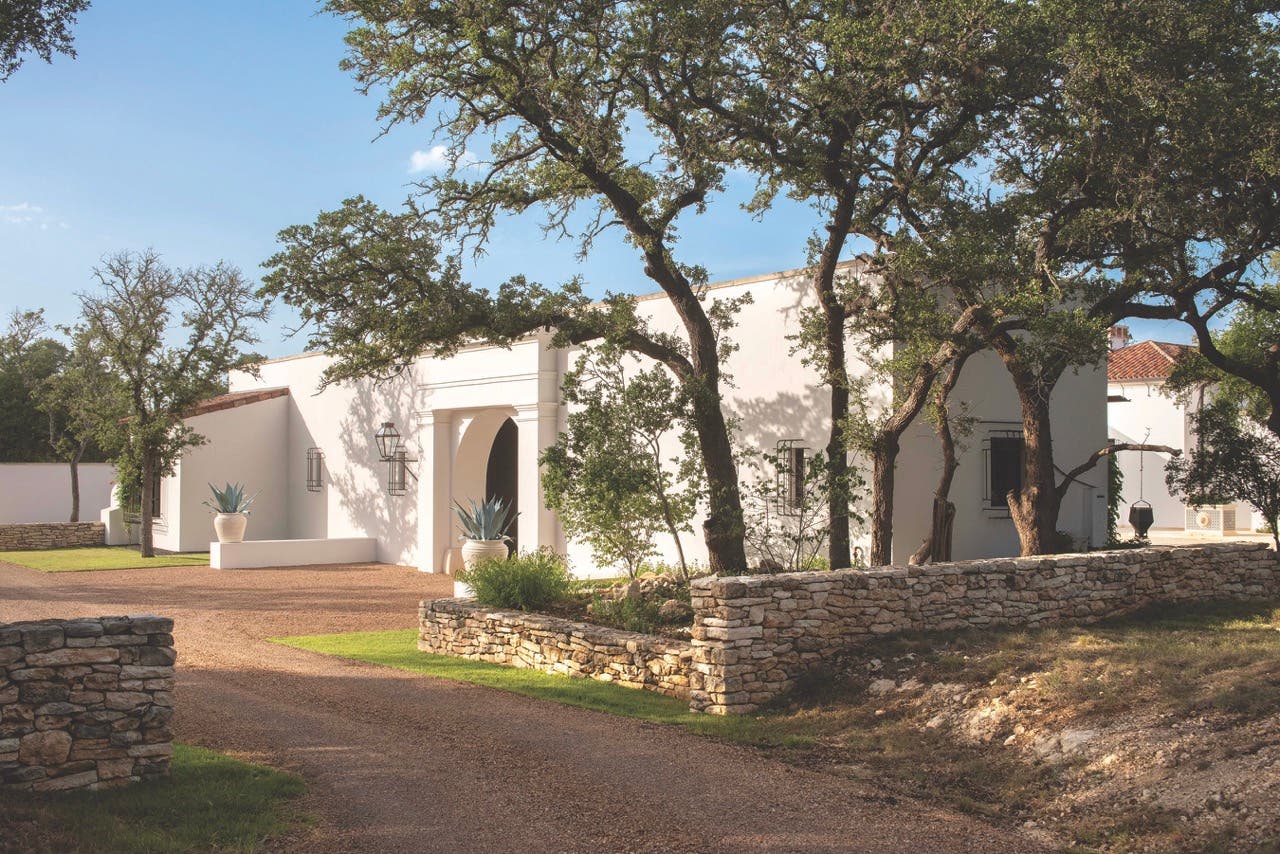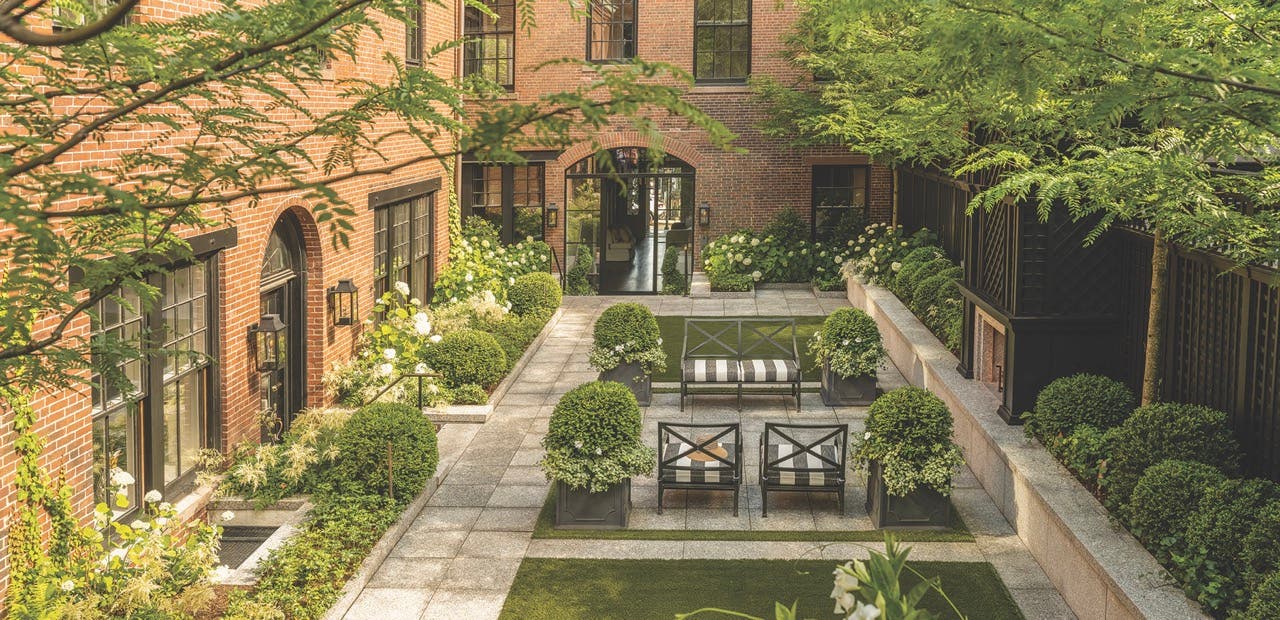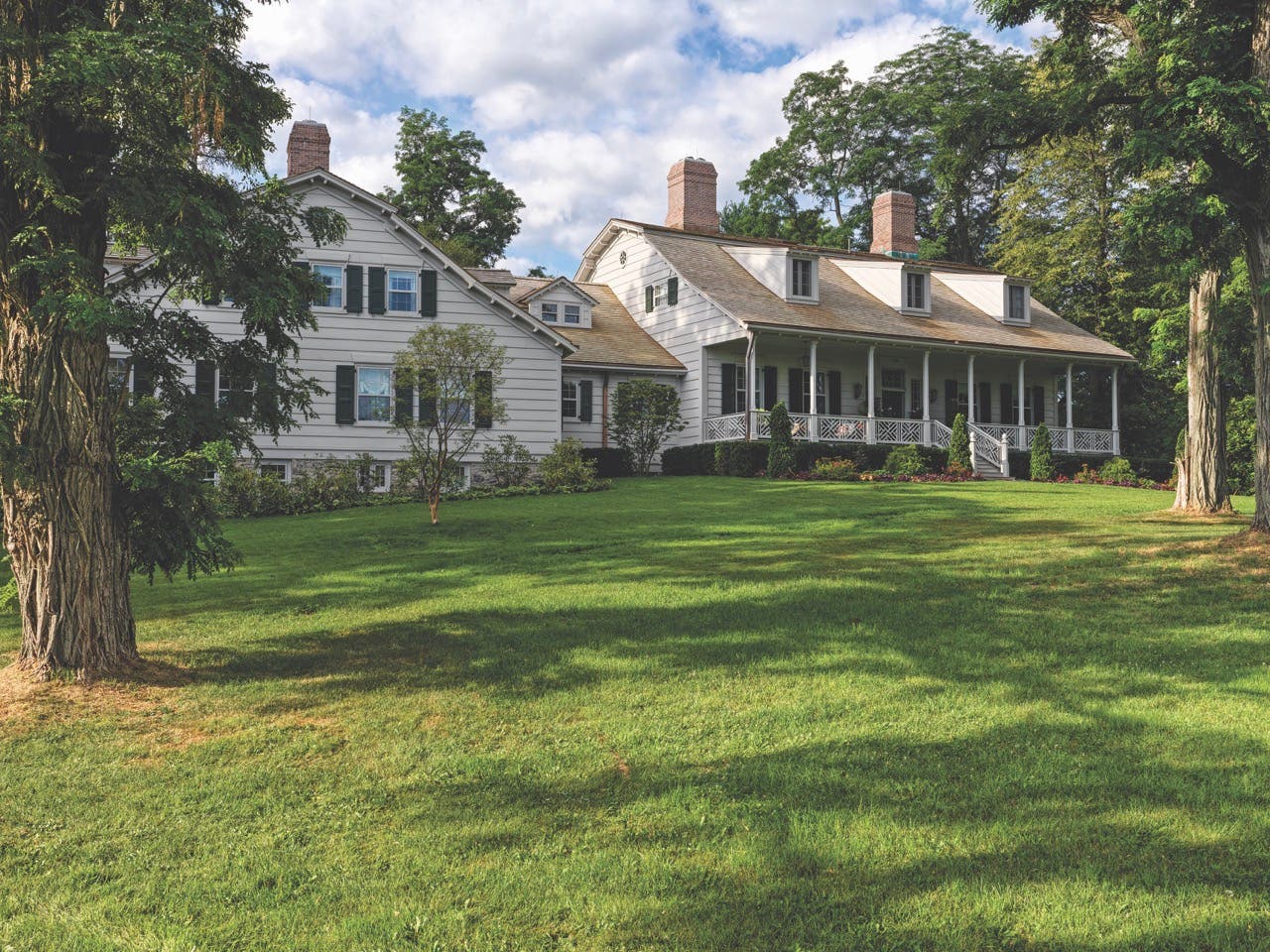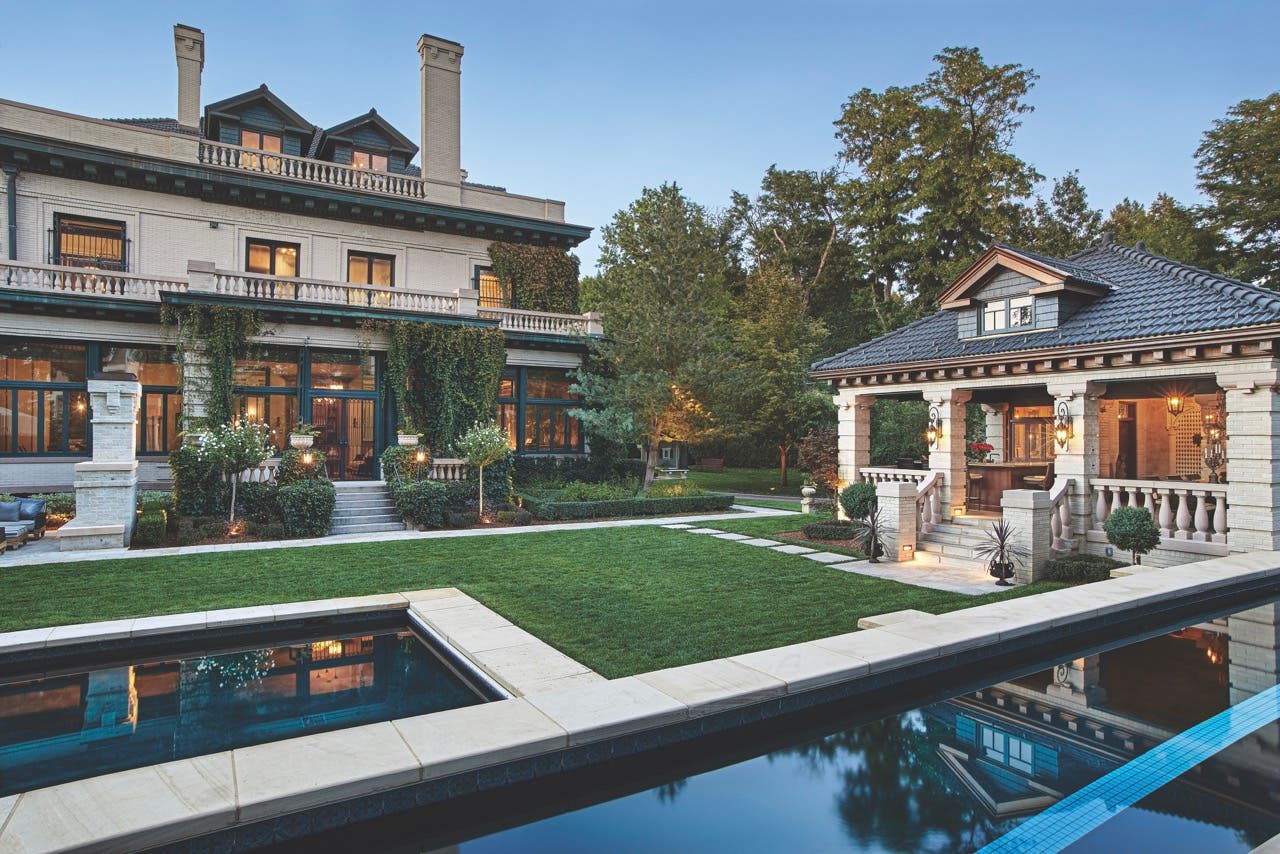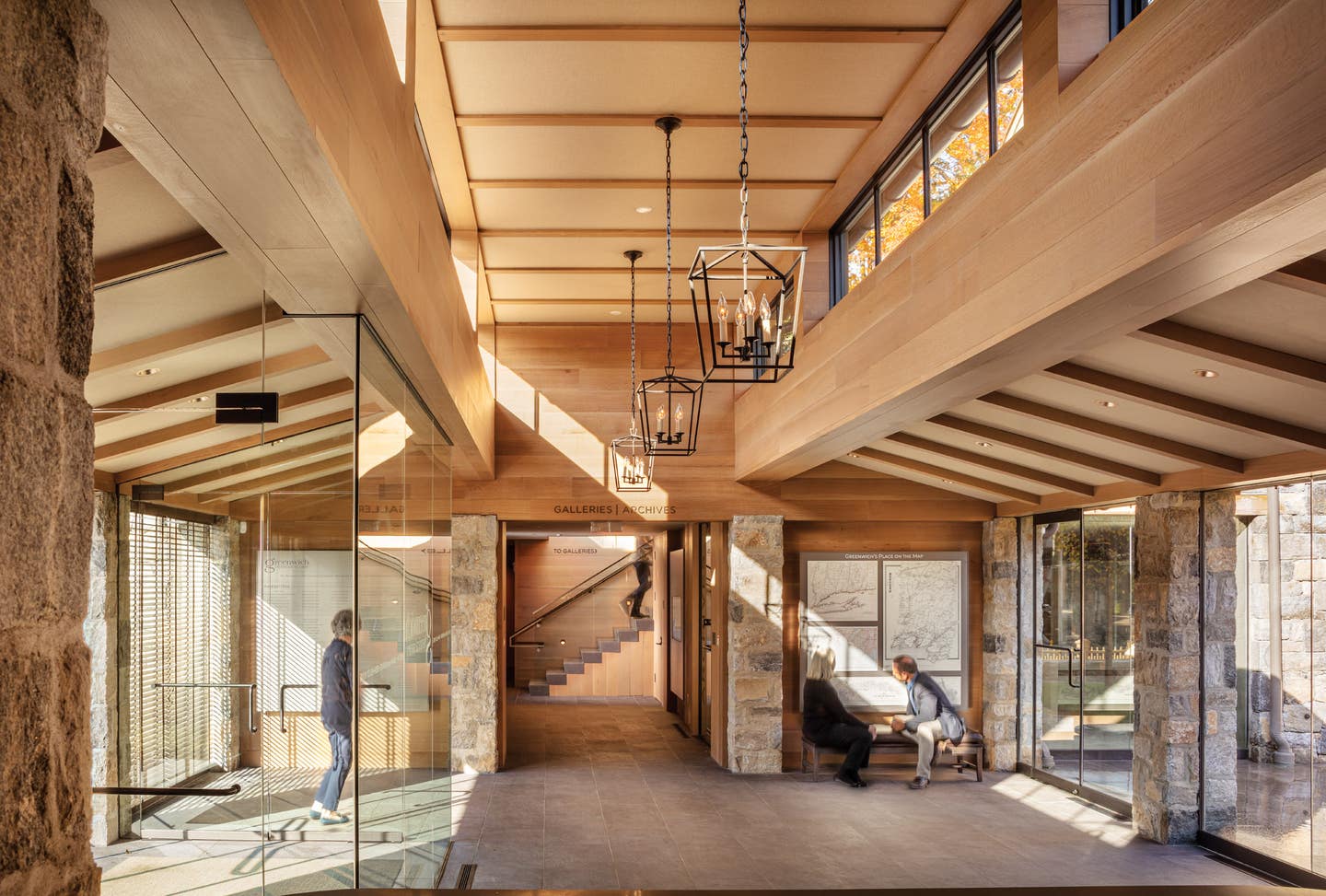
Palladio Awards
David Scott Parker Architects: Greenwich Historical Society Reimagined Campus Master Plan
Commercial Palladio Winner
Adaptive Reuse and/or Sympathetic Addition
Greenwich Historical Society Reimagined Campus Master Plan
David Scott Parker Architects
Southport, Connecticut-based David Scott Parker Architects—Principal David Scott Parker, associate principal John Wasilewski and project team members Armando Goncalves, Victor Sheptovitsky, and Katelyn Remington-Arata—devised a plan to address the society’s needs and overcome considerable site and functional constraints while also looking at its artistic past in an effort to reimagine the campus for a new generation of visitors.
“The society’s mission and constituency have evolved and expanded,” Parker says, adding that one of its primary goals was to make the campus and collections accessible. “They have a robust and diverse exhibition schedule and sponsor educational programs for groups of various ages, including all of the town’s schoolchildren. The society wasn’t looking to simply restore and furnish a house museum with brown furniture—a model that doesn’t resonate with younger people in the age of the Internet.”
Long before the Greenwich Historical Society took up residence, the property had quite an impact locally and nationally. From the 1890s to the 1920s, it was home to the Cos Cob Art Colony, the state’s first Impressionist enclave. Childe Hassam, Ernest Lawson, Theodore Robinson, John Henry Twachtman, and J. Alden Weir were among those who not only lived on the site but also featured its bucolic scenery and buildings in their most prominent paintings.
“Cos Cob was the ‘cradle of American Impressionism,’” Parker says. “And the effect it had on art in this country was profound.”
The artists spent their time at the circa 1730 Bush-Holley House, now a National Historic Landmark that the society has owned since 1958. They painted, etched, and drew the home, its interiors and gardens as well as the adjacent 1805 Bush Storehouse and also Toby’s Tavern—the 1855 Italianate hotel and watering hole that the society acquired in 2012. The three structures barely escaped destruction when nearby U.S. Interstate 95 blazed through the area in 1958.
Parker’s master plan took its cues from research of the property and Toby’s Tavern in particular for which he prepared a historic structures report. The society had already restored the Bush-Holley House, but its surroundings had been much altered and Toby’s had been significantly remodeled since the time of the art colonists, leaving the once bucolic landmark with little meaningful context.
Maps, detailed period photographs, and indeed the Cos Cob artists’ own artwork provided insights and a rationale for a site strategy that involved restoring the exterior of Toby’s Tavern while adaptively reusing the modestly scaled building as a visitor center, cafe and museum shop.
Physical research inside revealed fragments of period wallpapers that Parker’s team reproduced. The worn patina of the building’s original plank floors was preserved, and white-washed heavy-timber ceilings were exposed.
New gallery and archive facilities with requisite clear-span and climate-control requirements were accommodated in a cluster of new barn-like structures placed behind Toby’s where outbuildings once existed.
“Agrarian in appearance, they harmonize with the site while creating a wall of buildings between the historic campus and the expanded parking lot. It’s much bigger than Toby’s, but we made the complex look like separate buildings to diminish overall scale and appearance.”
The new building and Toby’s are linked by what Parker calls a portal—a glass loggia with stone piers and a clerestory monitor roof. This lobby serves as “propylaea,” a point of arrival and transition that frames views of the site and also functions as a place for small events and receptions.
In the permanent exhibition gallery of the new building, the Parker team positioned a large picture window framing a view of the Bush-Holley House alongside which hang significant artworks created on the site.
“There’s an orientation video about the history of Greenwich—this place and its people,” Parker says. “The window is covered by an automated panel during the video, and when it ends, the panel opens on cue to reveal the iconic scene depicted by the Cos Cob art colonists. Visitors exit to the rear and begin an accessible promenade across the hillside to the Bush-Holley House.”
While buffering the parking, the new complex also shields and mitigates the historic property from I-95, which is so close to the campus that part of the society’s parking lot extends under it. The site strategy also allowed for restoration of original gardens, grape arbors and consolidated green space.
Parker says the new campus has helped the public understand the history of the site in a completely new way.
“It’s vital to give continuing life to buildings and places—to reassert their relevance,” Parker says. “The buildings on the society’s landmark campus are part of a particular history, but they are also part of a larger story meaningful to society in general. Historical societies across the country are a tremendous resource that help us understand who we are culturally and socially and by telling stories from the past, provide motivation for the future.”
Key suppliers
Architect and Interior Designer David Scott Parker Architects
Landscape Architect Conte & Conte
Construction Manager A.P. Construction Co.
Landscape Installation Nick Papalia Landscaping
Carpentry Beaudoin
Electrical Enterprise Electrical Contractors
Hardware Canaan Distributors Corporation
Hardscape Fairfield House & Garden
Masonry DMA Construction
MEPF consulting engineering systems Altieri Sebor Wieber
Structural Engineers Di Salvo Engineering Group, Inc.
Prefinished Engineered Flooring and Wall Cladding Carlisle Wide Plank Floors
Historical Paint Analysis Jablonski Berkowitz Conservation
Mechanical Alliance Heating and Air Conditioning
Millwork Handcraft Cabinetry
Painting F.M. Testani
Plumbing Murace Plumbing Co
Stairs and Wood Railings Euro King Stairs and Railings
Storehouse Contractor Tancreti Construction
Structural Steel Steeltech Building Products
Wood Restoration Urban Aesthetics
Archives Carpeting Mannington Commercial; “Close Knit II”
Decorative Lighting Circa Lighting, Feiss and Restoration Hardware
Glass Doors Blumcraft
Elevator thyssenkrupp
Metal Bookcases and Compact Shelving Aurora Storage Products
Metal Railings Livers Bronze
Metal Roofing Metal Tech USA: “elZinc”
Porcelain Floor Tile and Pavers Atlas Concorde: “Trust”
Wall Coverings Spoonflower; Recreation of Historic Patterns
Windows Marvin; Wood Double Hung and Casement SDL
Wood Paneling and Trim Carlisle Wood Flooring “Elegant”
Wood Shutters Woodbury Supply



